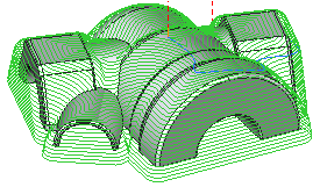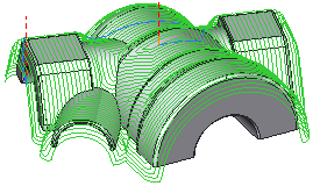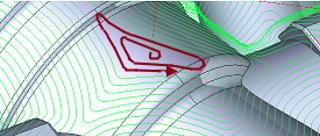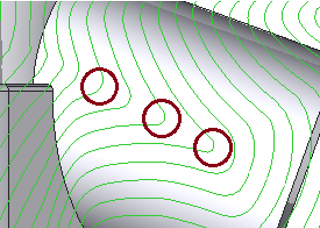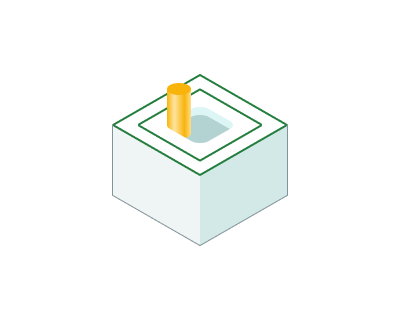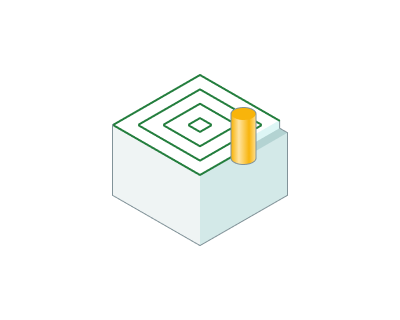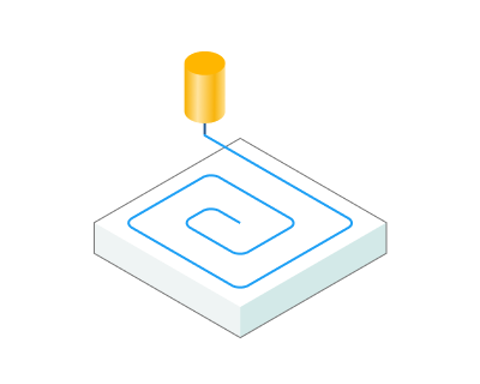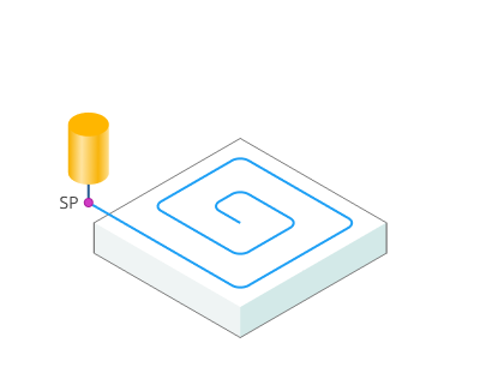Scallop finishing operation
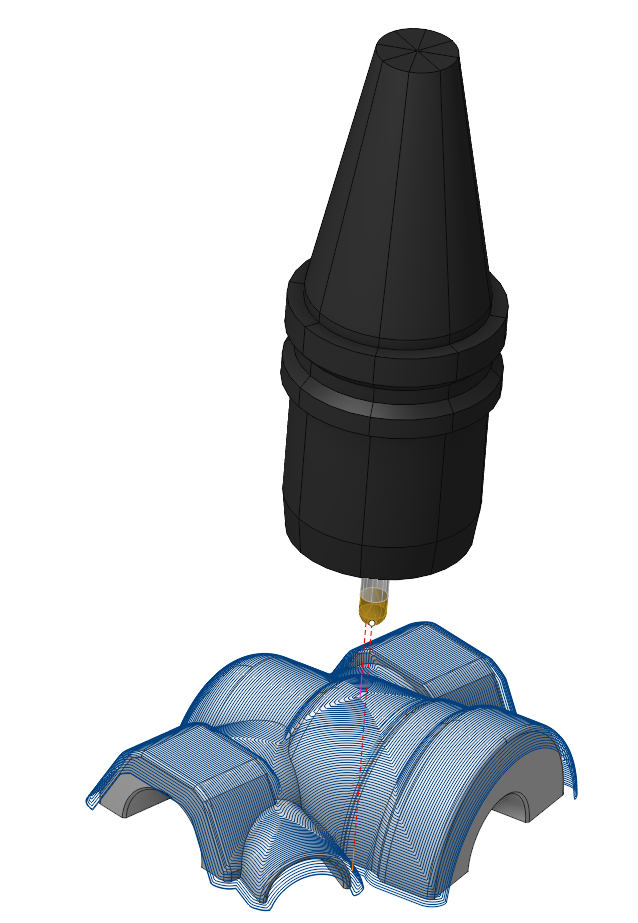
Application area:
The Scallop toolpath starts from the curves lying on the part surfaces and is generated by repeatedly offsetting those curves inwards until the curves collapse. This method creates a toolpath similar to equidistant strategy So basically it is an equidistant toolpath except the offsetting occurs t in 3d space on the machining surfaces, not on a plane . The toolpath achieves a consistent scallop height regardless of the steepness of machining surfaces. Another advantage is the minimal amount of linking moves together with respected climb/conventional milling type. The operation is best suited for semi-finishing and finishing.
Job assignment:
Machining Surfaces. Select various surfaces of the part as the working task. The system detects the starting curves as the curves of contact of the cutter with those surfaces.
Tilt Curve. This is t he curve that the tool axis vector aims at when setting Tool Orientation specification Through Curve.
Job Zone. Use the job zone to trim the passes outside the specified 2d containment areas. See more .
Restrict Zone. In addition to Job Zones in system you can use Restrict Zones geometry from curves and edges to specify the workpiece areas that should avoid machining in the current operation. The system generates restricted or cutted toolpath depending on the option you choose. See more.
Properties. Displays the properties of an element. It is possible to add the stock. You can also call this menu by double clicking on an item in the list.
Delete. Removes an item from the list.
Restrictions. It allows you to restrict areas that should not be machined. See more
Strategy:
Strategy:
These parameters allows the user to achieve a required geometry of toolpath:
Milling Type:
This feature enables users to select the necessary milling direction (climb or conventional) during the toolpath calculation process.
The parameters of Milling Type are the same as in the Waterline Roughing operation.
See more.
Sorting:
Controls the sequence of toolpath passes during surface machining.
Machining Levels:
It defines the range along tool axis for the machining. Specify the Bottom Level as in the Waterline Roughing operation. See more.
5 Axis Conversion:
You can control the tool's position when executing operations on a five-axis machine. See more.
The parameters of Tool orientation are the same as in the 5D Surfacing operation. See more.
Limit Rotation Angles:
When the flag is set and the 5 Axis Conversion option is on, it specifies the limit values of the tool's angular position relative to the axes. The parameters of Limit Rotation Angles are the same as in the 5D Surfacing operation. See more.
Trimming:
Allows for the skipping of surfaces not intended for machining and allows for the extension of the toolpath . The parameters of Trimming are the same as in the Waterline Roughing operation. See more.
Links/Leads:
In the Links/Leads tab, you define the parameters for rapid movements. These movements include tool approach from the tool change position, engage to the start of the working stroke, retraction after the final cutting motion, transitions between working passes, and return to the tool change point. You can configure the sequence of movements along the coordinates, the trajectory of these motions, and the magnitude of displacements.
Feeds/Speeds:
Using this dialogue the user can define the spindle rotation speed; the rapid feed value and the feed values for different areas of the toolpath. Spindle rotation speed can be defined as either the rotations per minute or the cutting speed. The defining value will be underlined. The second value will be recalculated relative to the defining value, with regard to the tool diameter. See more
Transformations:
Parameter's kit of operation, which allow to execute converting of coordinates for calculated within operation the trajectory of the tool. See more
Part:
A Part is a group of geometrical elements that defines the space to check for gouges. See more
Workpiece:
A workpiece model of an operation defines the material to be machined. See more
Fixtures:
As the Fixtures the fixing aids such as chucks, grips, clamps, etc., and the restriction areas of any other nature are usually specified. See more
